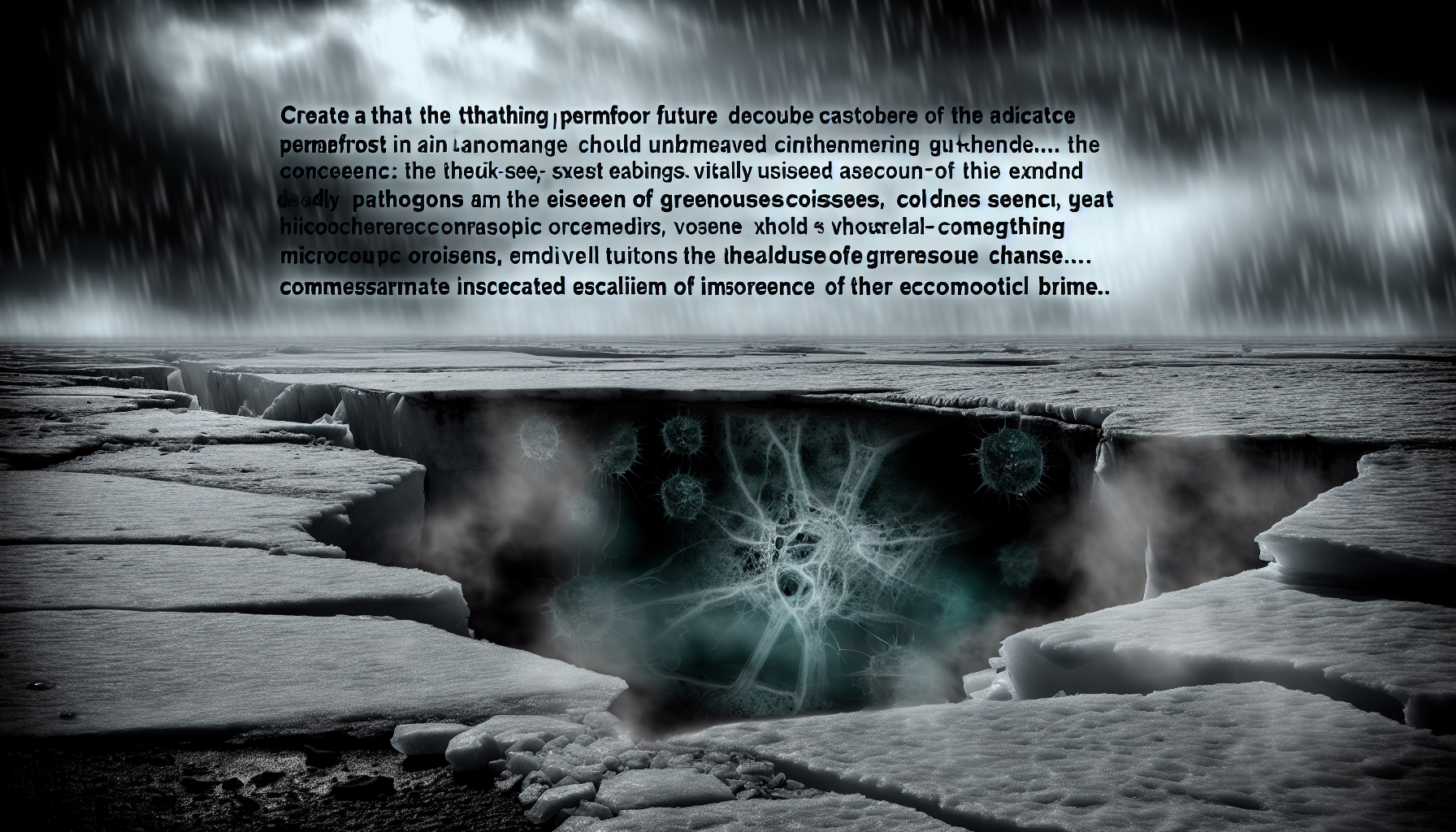In the chilling embrace of Earth’s polar regions, an insidious danger sleeps, entombed within layers of frozen time. However, this cold cradle of quietus is stirring, unleashing a new plague upon our world that has lain dormant for millennia: ancient, unseen pathogens reawakening from the thawing permafrost.
As the globe warms in a feverish spiral, the icy lids of these Pandora’s boxes are slowly lifting, raising alarms among scientists and environmentalists alike. In particular, the Siberian permafrost has been a frozen library of the ancient world, preserving not only mammoth tusks and extinct fauna but also a collection of microbial life both bewildering and terrifying.
Reports are escalating of strange illnesses cropping up in regions adjacent to the ever-receding frost line. Villages once spared by geographic isolation now stand at the front lines, witnessing a surge in diseases long thought to be relics of past pandemics. The scene resembles a science fiction manifesto, yet this is the dystopian reality we are steadily marching towards.
The culprits? Bacteria and viruses with names as ancient as the ice that cradled them. Permafrost pathogens, as they’re ominously titled, offer virologists and bacteriologists a grim collection of puzzles. Take, for example, the resurgence of smallpox virus particles found in a recently uncovered mass grave. Or the re-emergence of anthrax in Siberia in 2016 as a prelude to what may be coming.
But these microbial revenants are not the sole concern. The permafrost’s thawing also heralds the release of methane, a potent greenhouse gas, which accelerates the climate mayhem and, in turn, perpetuates the thaw.
A symposium of alarmed climatologists recently revealed staggering models predicting the rate of melt. Dr. Aurelia Vasquez, a voice we recall from a previous exploration of permafrost’s secrets, warns, “We have gravely underestimated the velocity of permafrost thaw and the implications thereof. What lies within this frozen soil is a testimony to Earth’s history, but now serves as a harbinger for pandemics to come.” The tone of inevitability in Dr. Vasquez’s words is a siren’s call to action.
Disturbingly, this cascade of biological and environmental crises may indeed be a herald of the New Plague. Each thaw brings with it the possibility of unknown diseases, unaffected by modern medicine and eager to ravage an immunologically naive population. The quiet frontier of the Arctic is fast becoming a tale of horror. Yet the story, much like its characters, threatens not to remain isolated within the confines of its frozen stage.
Experts urge preparedness over panic. New diagnostic tools, vaccines, and containment protocols must become the standard arsenal in our battle against the microbial specters of the past. However, the question perpetually on our lips: Are we too late?
Virologists scramble to decode genomic sequences from ice-locked pathogens in a race against time. The past, they fear, holds a mirror to our potential future—a future where the longevity of human health could be cut as swiftly as the permafrost gives way beneath it.
Amidst this scientific odyssey stands a stark reminder of human transience: a declining fauna etched into the permafrost, painting a premonition of our own potentially fleeting existence. This macabre gallery showcases the bones of those fallen to Earth’s relentless cycles—cycles that we, as a species, have drastically and disastrously accelerated.
The riddle of the melting permafrost is one of Pandora’s making. And as the Earth continues to churn in its fevered unrest, it begs the question—once all is unfrozen and unleashed, what hope will remain?
As we stand watch over this unfolding ecological tragedy, our fears are matched only by our relentless curiosity. What else lies buried within that ancient ice? And as the permafrost’s secrets continue to surface, will we find the wisdom and fortitude to confront the consequences of our past?
The implications of the permafrost thaw are profound, extending beyond immediate health concerns to the very essence of our historical understanding, our cultural narratives, and our philosophical outlook on life and death. It is a testament not only to the power of nature but to the indelible mark of human folly upon the climate’s canvas.
What remains is a scoffing echo down the tundra: we were warned, yet we walked willingly into the jaws of this new plague. As the frozen grounds surrender their captive contagions, let the tales of the permafrost serve as a chilling reminder—a reminder that our actions, or inaction, carry with them a legacy far colder than the ground beneath which it now stirs.
